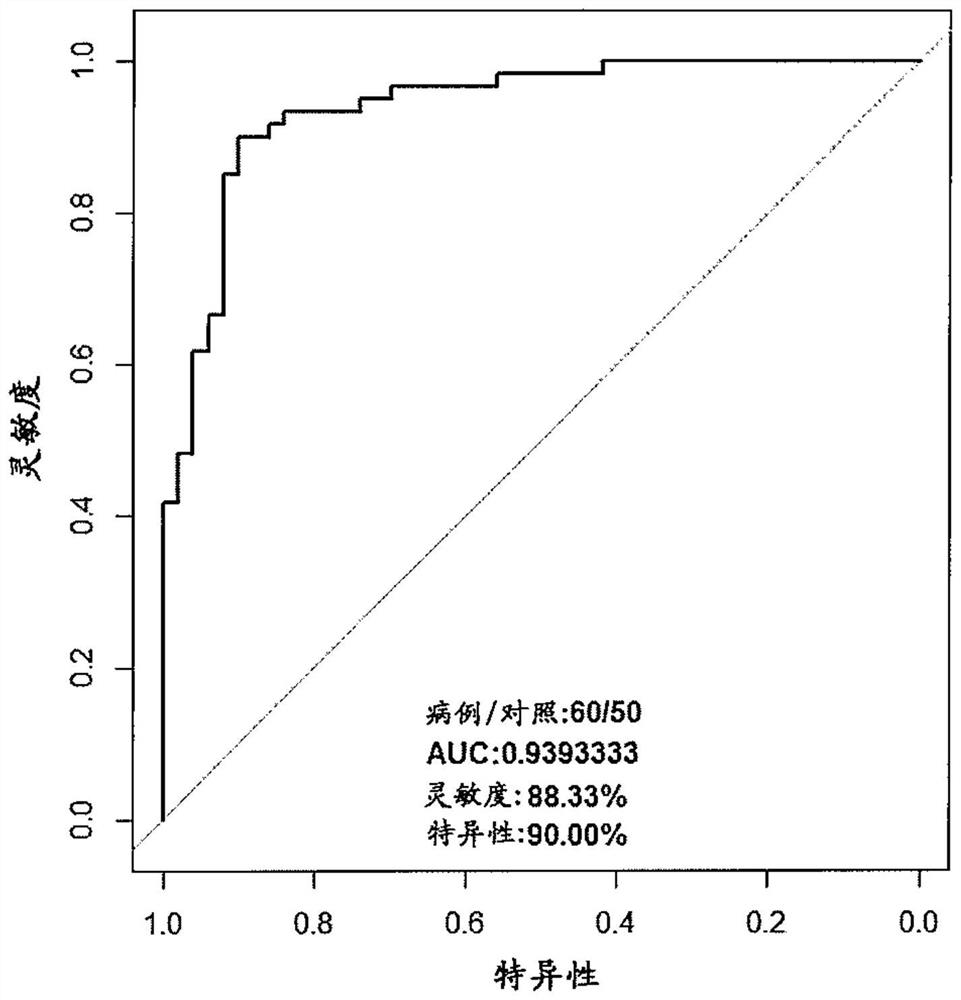Gene markers for detecting liver cancer and uses thereof
A gene marker, liver cancer technology, applied in biochemical equipment and methods, microbial determination/inspection, etc., can solve problems such as loss of treatment period, elevated serum AFP, imaging effects, etc.
- Summary
- Abstract
- Description
- Claims
- Application Information
AI Technical Summary
Problems solved by technology
Method used
Image
Examples
Embodiment 1
[0027] Example 1. Screening of Liver Cancer Gene Markers
[0028] (1) Extract plasma DNA:
[0029] 10ng plasma DNA was extracted from 20 liver cancer samples with hepatitis B and 20 hepatitis B samples respectively. This step can be carried out using any methods and reagents suitable for extracting plasma DNA well known to those skilled in the art.
[0030] (2) End-fill the plasma DNA, overhang A and connect with the sequencing adapter:
[0031] Prepare a reaction mixture containing 50uL plasma DNA, 7uL End Repair&A-Tailing Buffer and 3uL End Repair&A-Tailing Enzyme mix according to the Kapa Hyper Perp Kit instructions (total volume is 60uL), incubate at 20°C for 30 minutes, then incubate at 65°C for 30 minutes minute. Prepare the following ligation reaction mixture in a 1.5mL low adsorption EP tube: 5uL Nuclease free water, 30uL Ligation Buffer and 10 uL DNA Ligase. Add 5uL of sequencing adapters to 45uL ligation reaction mixture, mix, heat at 20°C for 20 minutes, and the...
Embodiment 2
[0051] Example 2. Effectiveness of Liver Cancer Gene Markers
[0052] This example verifies the effectiveness of the liver cancer gene markers of the present invention for detecting liver cancer.
[0053] Measure the 5-hmC content of 11 liver cancer gene markers according to the present invention in 110 samples (60 routine liver cancer samples with hepatitis B and 50 routine hepatitis B samples) according to the method of embodiment 1, and determine the weighting of each genetic marker coefficient.
[0054] The normalized 5-hmC content of each gene marker is multiplied by the corresponding weighting coefficient to obtain the predictor t of the gene marker, and then the predictor t of each gene marker is added to obtain the total predictor T, and then The total predictor T was Logistically transformed according to the following formula to obtain the score P:
[0055]
[0056] If P>0.5, the subject sample has liver cancer; if P≤0.5, the subject sample does not have liver ca...
PUM
 Login to View More
Login to View More Abstract
Description
Claims
Application Information
 Login to View More
Login to View More - R&D
- Intellectual Property
- Life Sciences
- Materials
- Tech Scout
- Unparalleled Data Quality
- Higher Quality Content
- 60% Fewer Hallucinations
Browse by: Latest US Patents, China's latest patents, Technical Efficacy Thesaurus, Application Domain, Technology Topic, Popular Technical Reports.
© 2025 PatSnap. All rights reserved.Legal|Privacy policy|Modern Slavery Act Transparency Statement|Sitemap|About US| Contact US: help@patsnap.com



